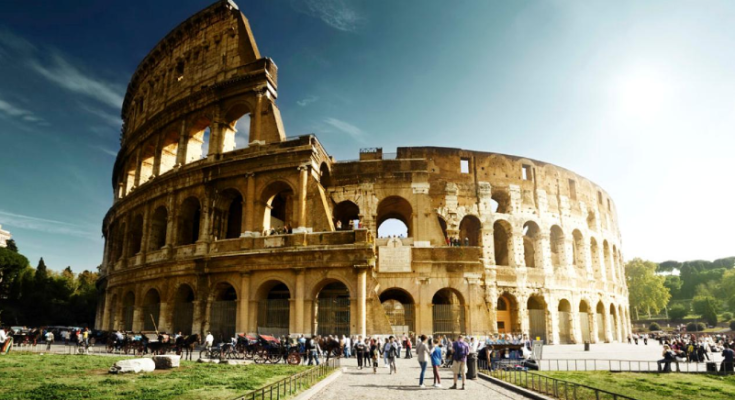Preserving Our Past: Cultural Heritage Preservation Efforts
Introduction:
Cultural heritage is the treasure trove of human history, encompassing artifacts, monuments, traditions, and practices that reflect the richness and diversity of human civilization. However, these invaluable assets are increasingly under threat from a variety of factors, including armed conflict, looting, urbanization, climate change, and neglect. Efforts to safeguard endangered artifacts and sites are critical to ensuring that future generations can continue to learn from and appreciate our shared cultural heritage. In this article, we will delve into the challenges facing cultural heritage preservation and the initiatives aimed at protecting and conserving these irreplaceable treasures.
1. Threats to Cultural Heritage:
a. Armed Conflict:
One of the most pressing threats to cultural heritage is armed conflict. Throughout history, cultural sites and monuments have often become casualties of war, either deliberately targeted or inadvertently damaged during armed conflicts. The deliberate destruction of cultural property as a tactic of war not only erases tangible traces of our shared past but also undermines cultural identity and heritage.
b. Looting and Illicit Trafficking:
The illegal trade in cultural artifacts is another major threat to cultural heritage preservation. Archaeological sites and museums are frequent targets of looters who plunder artifacts for sale on the black market. The illicit trafficking of cultural artifacts not only robs communities of their heritage but also fuels organized crime and undermines efforts to protect and preserve cultural treasures.
c. Natural Disasters:
Natural disasters, such as earthquakes, floods, hurricanes, and wildfires, pose a significant risk to cultural heritage sites and monuments. These disasters can cause irreparable damage to historic buildings, archaeological sites, and cultural landscapes, wiping out centuries of human history in a matter of moments.
d. Urbanization and Development:
Rapid urbanization and development are also threatening cultural heritage sites and landscapes. Historic neighborhoods, traditional villages, and archaeological sites are often bulldozed to make way for infrastructure projects, commercial developments, and residential expansion. As cities grow and expand, cultural heritage sites are increasingly at risk of destruction or degradation.
2. Initiatives for Cultural Heritage Preservation:
Despite these challenges, there are numerous initiatives and efforts underway to safeguard endangered artifacts and sites and preserve our cultural heritage for future generations.
a. UNESCO World Heritage Sites:
The UNESCO World Heritage program aims to identify, protect, and preserve cultural and natural heritage of outstanding universal value. World Heritage Sites, such as the Pyramids of Giza, the Great Wall of China, and the Acropolis of Athens, are recognized for their significance and placed under international protection to ensure their conservation for future generations.
b. Cultural Heritage Laws and Conventions:
National and international laws, treaties, and conventions play a crucial role in safeguarding cultural heritage. The 1970 UNESCO Convention on the Means of Prohibiting and Preventing the Illicit Import, Export, and Transfer of Ownership of Cultural Property, for example, aims to combat the illicit trade in cultural artifacts by promoting cooperation among countries and establishing legal frameworks for the protection of cultural heritage.
c. Community Engagement and Empowerment:
Community-based approaches to cultural heritage preservation empower local communities to take ownership of their cultural heritage and actively participate in its protection and conservation. By involving local stakeholders in decision-making processes, raising awareness about the value of cultural heritage, and promoting sustainable tourism and economic development, communities can become custodians of their cultural identity and heritage.
d. Technology and Innovation:
Advancements in technology, such as remote sensing, satellite imaging, 3D scanning, and digital documentation, offer powerful tools for cultural heritage preservation and conservation. These technologies enable researchers, archaeologists, and conservationists to monitor and assess the condition of cultural sites, document artifacts in high resolution, and create digital replicas for research, education, and virtual tourism purposes.
3. Challenges and Future Directions:
Despite the progress made in cultural heritage preservation, significant challenges remain, and future efforts will need to address these challenges to ensure the continued protection and conservation of our cultural heritage.
a. Funding and Resources:
Limited funding and resources pose a significant challenge to cultural heritage preservation efforts, particularly in developing countries and conflict-affected regions. Securing sustainable funding streams, mobilizing financial resources, and leveraging public-private partnerships are essential for addressing the urgent needs of cultural heritage conservation and protection.
b. Capacity Building and Training:
Capacity building and training programs are crucial for building the skills, knowledge, and expertise needed to safeguard cultural heritage effectively. Investing in education, training, and professional development for archaeologists, conservators, museum professionals, and heritage practitioners is essential for enhancing conservation practices and promoting best practices in cultural heritage preservation.
c. Climate Change and Environmental Degradation:
Climate change and environmental degradation pose new challenges to cultural heritage preservation, with rising sea levels, extreme weather events, and changing environmental conditions threatening vulnerable cultural sites and artifacts. Developing climate resilience strategies, implementing adaptation measures, and integrating climate considerations into cultural heritage management plans are essential for safeguarding cultural assets in a changing climate.
Conclusion:
Preserving our cultural heritage is a shared responsibility that requires collective action and commitment from governments, civil society, academia, and the private sector. By raising awareness about the importance of cultural heritage, strengthening legal frameworks, promoting community engagement, harnessing technology and innovation, and addressing funding and capacity challenges, we can safeguard our cultural treasures and ensure they are preserved for future generations to cherish and enjoy. As custodians of our cultural heritage, we have a duty to protect and preserve these irreplaceable artifacts and sites, which serve as a testament to our shared human history, identity, and legacy.
For more information visit: elmzaango.com
For more information visit: newsburing.com
